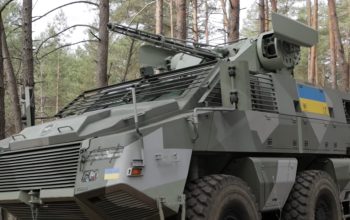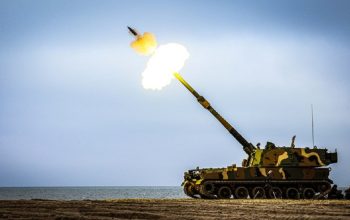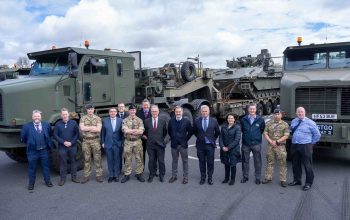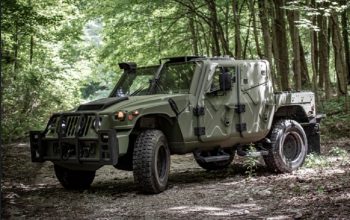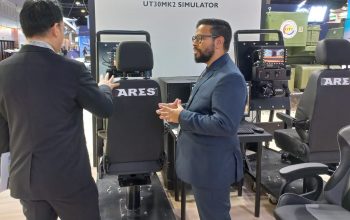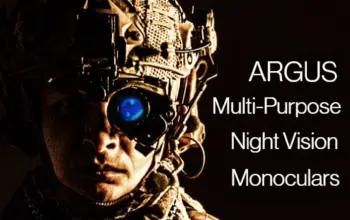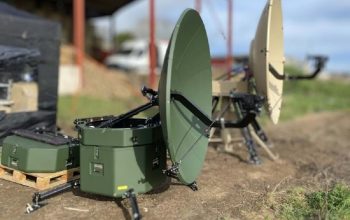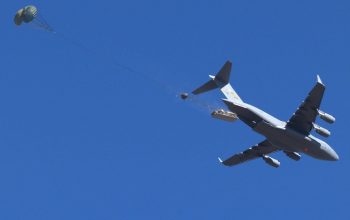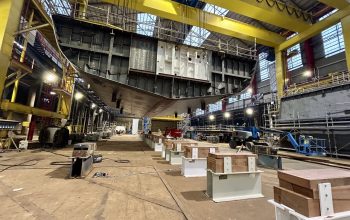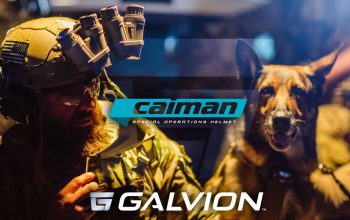KEYPORT, Wash. (NNS) — The Naval Undersea Warfare Center (NUWC) Division, Keyport is striving to take a load off the shoulders of the Sailors and civilian workforce by developing technology such as exoskeletons.
Human Assistive Technology (HAT) is the development and use of technology to reduce the load and strain a person’s body experiences while performing a task, such as lifting or moving loads or working overhead for extended periods of time.
“There’s two main types of HAT we’re looking at, passive and active,” said Aaron J. Clark, project lead in the Human Performance Engineering (HPE) branch of NUWC Division, Keyport’s In-Service Engineering Department.
“The passive units use springs, etc., to provide support to the workers. Active versions provide actual electrical or hydraulic power assistance for task completion. There are very few of these systems available and most are for clinical settings, especially to assist with stroke or paralysis rehabilitation.”
NUWC Division, Keyport is a component organization of Naval Sea Systems Command (NAVSEA). NAVSEA developed a “Campaign Plan 2.0” to govern its strategic vision, and one pillar of the plan specifies the goal of improving systems and capabilities while equipping people with the best tools available. Enabling Sailors and civilian workers to perform tasks with greater ease, efficiency, and less stress on their bodies aligns squarely with these goals.
“A human is part of every system we develop, so their needs have to be considered. This is the basic idea behind Human Systems Integration (HSI),” said Clark.
Clark’s work focuses on exoskeletons, but HAT convers a range of technologies that can assist a human more efficiently in training or working. Clark said exoskeletons are not just intended for those who have to move heavy loads, but can be used for something as routine as painting a ceiling or overhead space. A person holding their arms aloft quickly suffers fatigue, and repetition of such movements over time has the potential to result in injuries. HAT is a promising solution to reduce or eliminate these injuries.
“The exoskeleton industry is relatively young, so there is not a large body of research on how effective these systems are,” said Clark. “The research to date shows promise for upper body exoskeletons in jobs that are very repetitive and predominately overhead. We’re less clear on how effective they will be for the varied tasks that a shipyard mechanic might do during their day.”
Clark also cautioned that rushing this technology out to the fleet could have unintended consequences.
“There’s a cost to wearing these devices because they take time to don and doff, they restrict some movement, and they add weight and heat to the worker,” said Clark. “We also don’t completely know the effects of moving these forces to other parts of the body. It may be we’re only preventing hand injuries at the expense of shoulder injuries, or back injuries at the expense of knee injuries, so, before we really deploy these systems, we need to make sure the benefits outweigh the costs.”
The Naval Surface Warfare Center Dahlgren Division in Virginia is the center for HSI development, but NUWC Division, Keyport has the expertise to refine HAT while studying it for undersea use. Research and development primarily geared towards shipyards might not seem a likely course of work for an undersea warfare development center, but Clark said developing tools for the shipyard is only the first step in adapting those tools for the undersea warfighter.
“Keyport does a lot of integrated logistics support, which is where HSI is generally aligned at the program level,” Clark said. “We have the expertise to accomplish it and it fits into our broader strategic plan for advanced training technologies.”
Currently Clark and his team are doing small-scale trials and demonstrations of the technology.
“We’re mostly doing small scale field trials,” said Clark. “The Army is testing some powered and unpowered lower body systems which are showing some promise for soldiers on long marches, and the Air Force is about to start testing a full-body powered exoskeleton that will mainly be used in warehouses or maintenance shops. The HAT industry is poised to take off, but needs some breakthroughs in energy storage and miniaturization to really be viable.”
Clark said NUWC Division, Keyport is partnering with several organizations in the HAT development effort.
“We’re working closely with the shipyard Ergonomics Community of Practice (CoP), which is made up of the ergonomics leads from the four shipyards, and some intermediate-level maintenance activities,” said Clark. “We’re part of the DoD Human Assistive Technologies CoP, which is run by Naval Surface Warfare Center Carderock Division, and includes members from the Army and Air Force. We are also working with the Washington State Labor & Industries Ergonomics Roundtable and Exoskeleton Advisory Group, which has brought us contacts at Boeing and other big employers in the area.”
This type of interagency partnership furthers the goals of Assistant Secretary of the Navy (Research, Development, and Acquisition) James Geurts’ “NavalX” effort. NavalX is designed to break down barriers to innovation and speed the development of new technologies by creating a “technology ecosystem” in which multiple Navy agencies can work together and with civilian partners from industry and academia.
Clark said the focus of the effort is a very simple one: enabling all Navy workers, active duty and civilian, to have long, productive careers.
“Our goal is for every worker to have a long and healthy career,” said Clark. “That attitude pays for itself through a more productive workforce which sees fewer lost workdays, lower brain drain from early retirements and reduced healthcare costs.”
Source Naval Undersea Warfare Center Division, Keyport
www.navy.mil/local/nuwcd/
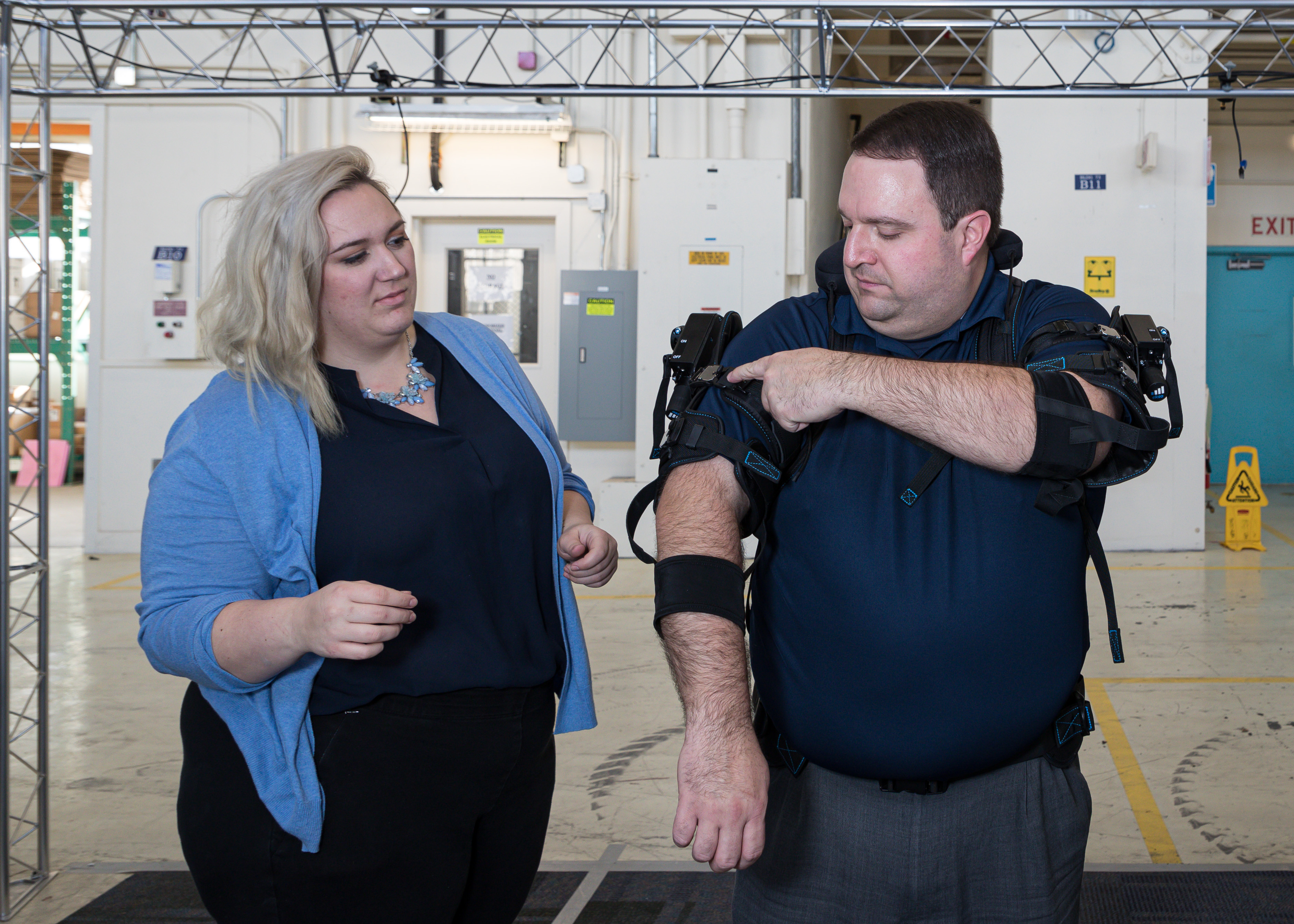
KEYPORT, Wash. (Nov. 6, 2019) Kirsten Miskovich assists Aaron J. Clark, project lead in the Human Performance Engineering (HPE) branch of the Naval Undersea Warfare Center (NUWC) Division, Keyport In-Service Engineering Department, as he tries on an exoskeleton during developmental work in human assistive technology (HAT). NUWC Division, Keyport is one of the Navy’s research centers developing HAT in order to better equip future Sailors and workers for 21st century challenges while reducing fatigue and lowering their risk for injuries. (U.S. Navy photo by Shayna Gosney/Released)


